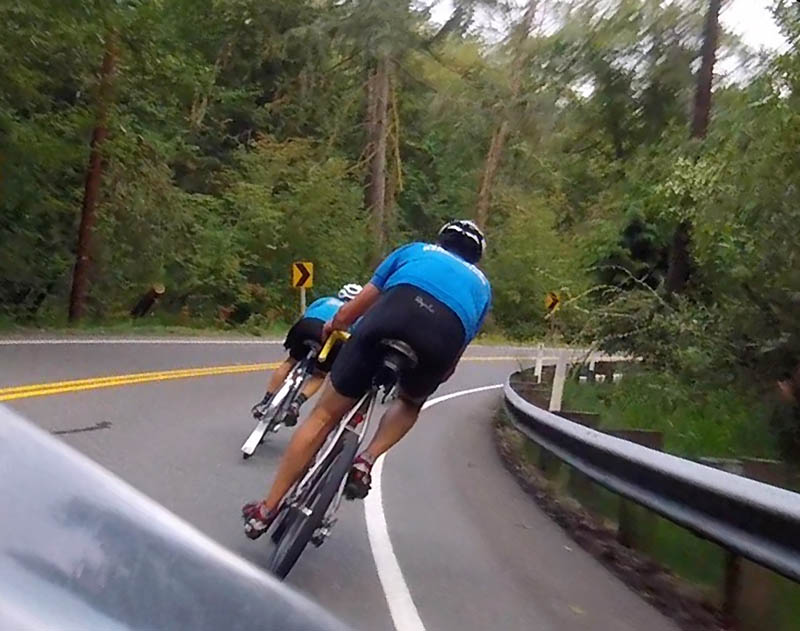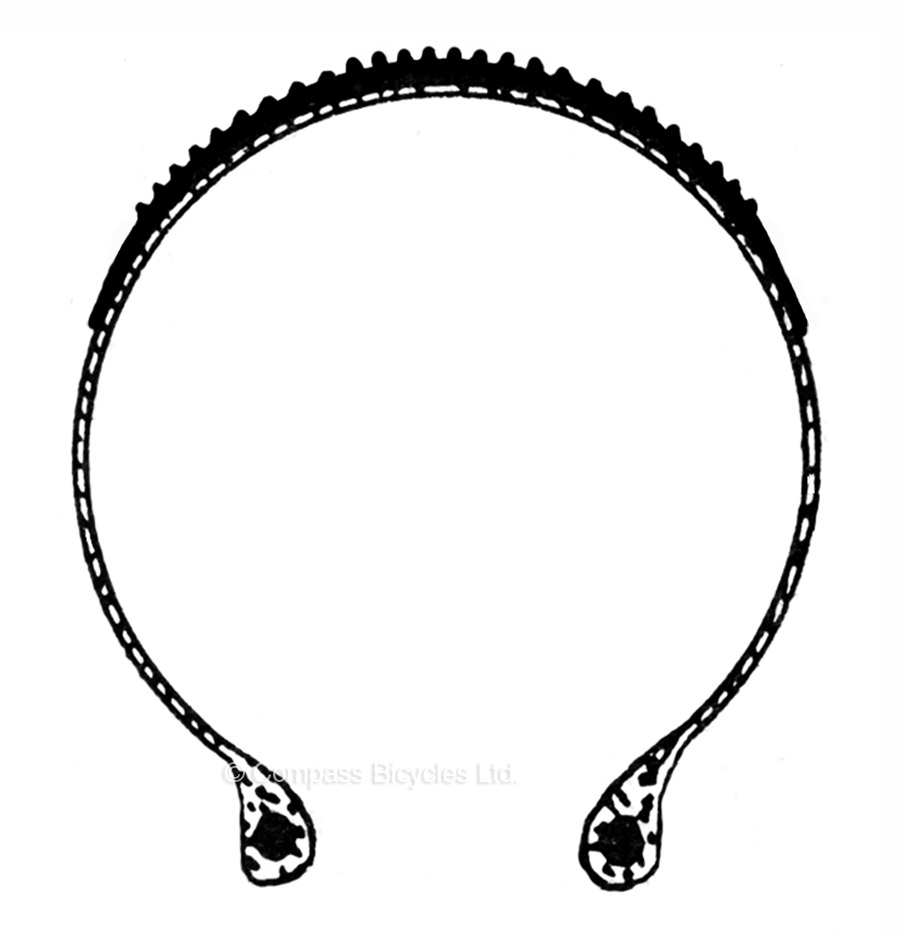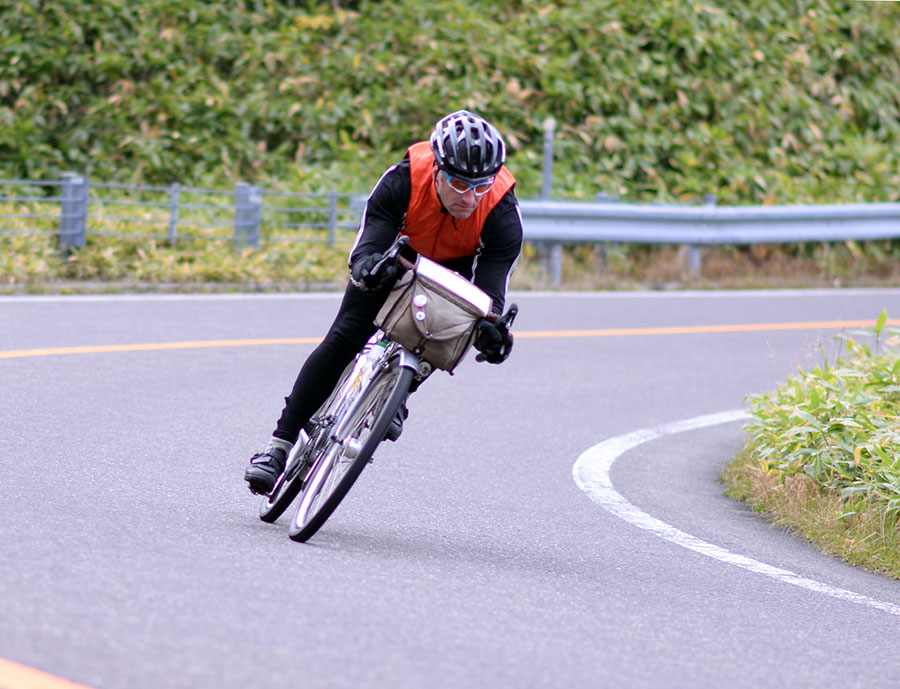What makes a tire corner well?

Like many cyclists, we love climbs, but we live for twisty downhills. The feeling of the bike leaning deep into a turn is something that is hard to explain, yet easy to enjoy.
This video clip was taken on a short descent toward Lake Washington. We know this road well, and even though we aren’t taking any risks, it’s always fun.
Obviously, one key component in making descents fun and safe are good tires. What makes a tire corner well? Here are some factors that determine cornering grip on pavement.

Most important is a round profile. That way, the tire’s behavior is always the same, no matter how far you lean the bike.
Some older tires were taller in the center – I believe the idea was that you’d roll on a narrower portion of the tire, which was thought to be faster. This caused strange transitions as the effective radius of the tire changed as you leaned the bike. Some tires have a squared-off profile. That is even worse, as amount of rubber on the road decreases dramatically as you lean the bike into the corner. Fortunately, most ‘road’ tires today are round.

Next in the order of importance is the rubber compound. A grippy rubber compound will make the tire stick better to the road surface.
In the past, we had to choose between grippy rubber that wore out quickly, or durable tires that provided heart-stopping moments when they suddenly lost traction and skipped sideways.
Today, the best rubber compounds combine excellent grip with long life, giving us the best of both worlds.

The width of the tire is also very important. More rubber on the road provides more grip – that is why racing motorbikes use wide tires.
On bicycles, there are two reasons why wider tires grip better. They run at lower pressures. This allows them to stay in contact with the road surface better. When a narrow tire skips over a bump, it loses traction. The suppleness of the casing plays a role, too: A tire that absorbs bumps better also has more traction.
Reason 2 why wide tires have more grip: The tread rubber interlocks with the irregularities of the road surface. A wider tire can interlock with more surface irregularities, so it has more grip.

Tread patterns also contribute to the grip of a tire, or reduce it. Micro-knobs that squirm under cornering loads should be avoided. The most grippy treads are designed to provide as many interlocking edges as possible. This is especially important on wet roads, where the pure friction between rubber and asphalt is much reduced. But you’ll notice the effect even in dry corners.
Why do racing motorbikes use slick tires? Motorbikes are too heavy and too powerful to use fine ribs – they’d wear off immediately. Instead, they use very soft rubber compounds. The heavy weight and high speed of the motorbike pushes the tire into the road, thus creating the interlock with the road surface. The downside is that racing motorbike tires wear out very quickly.

Tire pressure is important, too. It’s a compromise: Pump up your tires too hard, and they’ll skip over bumps and lose traction. Run the pressure too low, and the tire can collapse during hard cornering. If your pressure is just a bit too low, you’ll just notice that the bike is running wide. If it’s much too low, the sidewall can suddenly collapse, which isn’t a good feeling at all. Fortunately, there is a wide range of ‘OK’ pressures between these extremes.

Temperature is important, too. Rubber becomes more sticky when it’s warm. On a cold day, the grip from your tires will be much reduced – even if you don’t run into ice.
Racing motorbikes warm up their tires for optimum grip, but cyclists are too light to generate significant heat when cornering.

At least as important as the outright grip of your tires is the feedback they provide as you corner. Narrow tires provide very little, but wide tires with good tread patterns give you feedback of how much grip you have in reserve. It’s subtle, but once you know what it feels like, you can sense whether you have a lot of grip in reserve, or whether you are approaching the limit. The best way to learn what this feels like is to ride on slippery surfaces – mud or snow – where you can slide at low speeds and (usually) recover from the slide. But that is a topic for another post…
In summary, to corner with confidence, you want a tire that is round, wide, supple, with a tread pattern that interlocks with the road surface, a rubber compound that grips well – and ideally, you’ll ride on a warm or hot day.

At Rene Herse Cycles, we love descending, so we’ve optimized our tires for all these factors – except the weather. You’ll have to provide that yourself.


